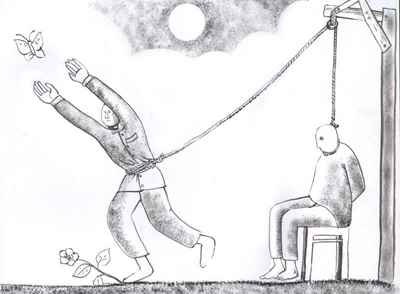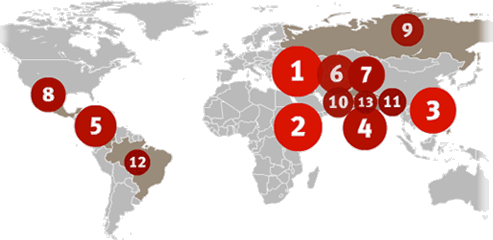The government’s effort to silence critical media has been brutally effective as politically motivated deaths, attacks, and disappearances go uninvestigated and unprosecuted. The sister websites Groundviews and Vikalpa became the last independent news sites based in Sri Lanka, after a series of attacks on Lanka eNews. Arsonists attacked the offices of Lanka eNews in January, and authorities arrested the site’s Colombo-based editor Bennet Rupasinghe in March. The site continued to publish from London but was blocked domestically. Authorities have turned the notion of law enforcement on its head, obstructing justice in numerous anti-press attacks. Prime examples are the unsolved 2010 disappearance of cartoonist Prageeth Eknelygoda and the unsolved 2009 murder of prominent editor Lasantha Wickramatunga. Anti-press violence continued in 2011. In July, Gnanasundaram Kuhanathan, news editor of the Tamil-language daily Uthayan, was assaulted in northern Sri Lanka by assailants wielding iron bars. News media access to northern, predominantly Tamil areas remained severely restricted. The government and Tamil secessionists rejected allegations that they committed human rights violations during the long civil war, but independent coverage of the abuses was limited.
Sri Lanka
» Critical website banned, leaving just two independent, domestic news sites.
» Impunity in anti-press attacks widespread; another assault goes unpunished.
The government’s effort to silence critical media has been brutally effective as politically motivated deaths, attacks, and disappearances go uninvestigated and unprosecuted. The sister websites Groundviews and Vikalpa became the last independent news sites based in Sri Lanka, after a series of attacks on Lanka eNews. Arsonists attacked the offices of Lanka eNews in January, and authorities arrested the site’s Colombo-based editor Bennet Rupasinghe in March. The site continued to publish from London but was blocked domestically. Authorities have turned the notion of law enforcement on its head, obstructing justice in numerous anti-press attacks. Prime examples are the unsolved 2010 disappearance of cartoonist Prageeth Eknelygoda and the unsolved 2009 murder of prominent editor Lasantha Wickramatunga. Anti-press violence continued in 2011. In July, Gnanasundaram Kuhanathan, news editor of the Tamil-language daily Uthayan, was assaulted in northern Sri Lanka by assailants wielding iron bars. News media access to northern, predominantly Tamil areas remained severely restricted. The government and Tamil secessionists rejected allegations that they committed human rights violations during the long civil war, but independent coverage of the abuses was limited.
-
1
Missing -
9
Murdered in Rajapaksa era -
4th
Impunity Index ranking -
25
In exile, 2001-11 -
12%
Internet penetration, 2010
The 2010 disappearance of Lanka eNews cartoonist Prageeth Eknelygoda has gone virtually unexamined, according to CPJ research. Eknelygoda was also a political reporter for the opposition website.

CPJ data show that since Mahinda Rajapaksa became prime minister in April 2004, and then later president, nine journalists have been murdered in politically charged circumstances.
Sri Lanka is one of the worst nations in the world in combating anti-press violence, according to CPJ's Impunity Index. The index calculates unsolved journalist murders as a percentage of each country's population. Authorities have obtained no convictions in any of the nine murders in the past decade.

| 1. Iraq 2. Somalia 3. Philippines 4. Sri Lanka | 5. Colombia 6. Afghanistan 7. Nepal 8. Mexico | 9. Russia 10. Pakistan 11. Bangladesh 12. Brazil | 13. India |
Violence and intimidation have forced Sri Lankan journalists to flee in high numbers. Despite its small size, Sri Lanka ranks among the leading nations from which journalists have fled, CPJ research shows.
68 Somalia
66 Iran
55 Iraq
49 Zimbabwe
47 Eritrea
25 Sri Lanka
20 Colombia
18 Haiti
18 Rwanda
18 Uzbekistan
17 Gambia
Sri Lanka's Internet usage rate tripled from 2007 to 2010, according to the International Telecommunication Union, or ITU. With the shutdown of Lanka eNews, the nation has only two domestic websites, Groundviews and its sister Vikalpa with Sinhala and Tamil content, that are critical of the government.
Maldives: 28.3 percent
Pakistan: 16.8
Sri Lanka: 12
India: 7.5
Nepal: 6.8
Afghanistan: 4
Bangladesh: 3.7
